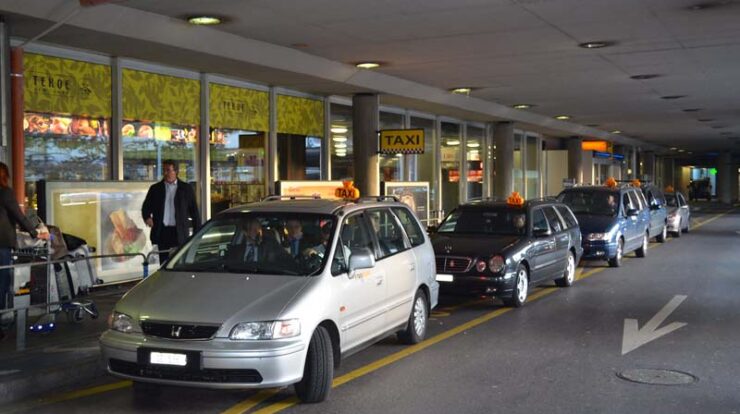
Choosing to fly private unlocks a world of convenience, luxury, and efficiency—but to make the most of the experience, it’s essential to select the right jet for your needs. With a wide variety of aircraft available, each designed for specific ranges, capacities, and comfort levels, making the right choice can be overwhelming. Whether you’re flying for business, leisure, or a special occasion, this guide will walk you through selecting the best aircraft for your charter requirements, ensuring your journey is as seamless and enjoyable as possible.
- Understand the Purpose of Your Trip
The first step in choosing the right private jet is identifying the purpose of your journey. Are you traveling for business and need to hold meetings onboard? Are you flying with family and want a relaxing, entertainment-equipped cabin? Will you be carrying a large group or special equipment?
Your trip’s purpose influences many factors—from seating configuration and cabin layout to in-flight amenities and required baggage capacity. For instance, executives might prefer jets with high-speed Wi-Fi and conference seating, while leisure travelers may prioritize comfort features like spacious beds, entertainment systems, and gourmet catering.
- Know Your Travel Distance
One of the most critical factors in selecting the best aircraft for your charter requirements is the flight distance. Aircraft are classified into categories largely based on their range:
- Light Jets (e.g., Phenom 300, Citation CJ3)
Ideal for short-haul flights (up to 3 hours or ~1,500 miles). These jets are cost-effective and can access smaller airports. - Midsize Jets (e.g., Learjet 60, Hawker 800XP)
Suitable for flights of 3–5 hours (~2,000–3,000 miles), offering more cabin space and amenities. - Super-Midsize Jets (e.g., Challenger 350, Gulfstream G200)
Great for coast-to-coast travel. These jets typically feature stand-up cabins, Wi-Fi, and larger baggage holds. - Heavy Jets (e.g., Gulfstream G550, Falcon 900)
Designed for long-haul international flights. They can fly over 6,000 miles nonstop and offer luxury accommodations like beds, full galleys, and conference areas.
Understanding your route and total flight time will help eliminate aircraft that lack the necessary range or make unnecessary fuel stops, optimizing both time and comfort.
- Consider the Number of Passengers
Passenger count plays a big role in selecting the right private jet. A light jet might be perfect for a couple or small group, but quickly becomes cramped with 6 or more passengers. If you’re traveling with a larger party, consider a midsize or heavy jet for added seating, comfort, and space.
Also, take into account each passenger’s needs—children, elderly travelers, pets, or those with limited mobility may require specific cabin features or layout configurations.
- Think About Baggage Requirements
Don’t underestimate baggage needs. Each aircraft has a weight and volume limit for luggage. Golf clubs, skis, business equipment, or multiple large suitcases can quickly exceed the capacity of smaller jets.
For example, a Citation Mustang may only accommodate a few small bags, while a Gulfstream G650 can easily carry larger items and more of them. If you’re traveling with bulky or heavy luggage, ensure the aircraft you select has adequate baggage storage both in volume and access (external vs. internal compartments).
- Prioritize Comfort and Onboard Amenities
Different aircraft offer varying levels of comfort, amenities, and luxury. When selecting the best aircraft for your charter requirements, think about what will make the trip enjoyable—not just tolerable.
Common features to consider include:
- Stand-up cabins (available in midsize jets and above)
- Lavatories (some light jets don’t have fully enclosed restrooms)
- Entertainment systems (TVs, music, streaming)
- In-flight connectivity (Wi-Fi, satellite phones)
- Sleeping arrangements (lie-flat seats or beds)
- Onboard dining (galley space, catering options)
The longer the flight, the more important these features become. A well-appointed cabin with the right amenities can transform a long journey into a relaxing experience.
- Assess Airport Accessibility
One often overlooked consideration is airport accessibility. Not all jets can land at all airports due to runway length, altitude, and weight restrictions. Light jets and turboprops can access smaller regional airports with shorter runways, bringing you closer to your final destination.
If you’re flying to a remote location or a small city, a smaller aircraft might be necessary—even if it means making a fuel stop. On the other hand, major international routes can accommodate larger jets and even wide-body options for extra space and comfort.
- Set Your Budget
Budget always plays a role, but private aviation offers flexible pricing based on aircraft category, routing, and availability. Light jets typically start around $2,000–$3,000 per hour, while heavy jets can exceed $8,000 per hour.
When working with a charter broker, be transparent about your budget so they can recommend the most suitable aircraft without compromising safety or comfort. Also factor in:
- Landing fees
- Fuel surcharges
- Overnight crew fees
- De-icing (if flying in winter)
- Catering and ground transportation
By understanding the total cost structure, you’ll avoid surprises and stay within your desired spending range.
- Work with a Reputable Charter Broker
Choosing the perfect jet doesn’t have to be stressful. A trusted charter broker simplifies the process by providing tailored recommendations based on your needs. They have access to a vast network of aircraft worldwide and can offer transparent comparisons, verified operator safety ratings, and assistance with logistics.
A broker ensures you’re not just booking a jet—but the right jet. They’ll also handle flight planning, customs coordination, and last-minute changes, leaving you free to focus on enjoying your journey.
- Check Operator Safety Standards
Safety should never be compromised. When reviewing aircraft options, ask for the operator’s safety record, maintenance history, and certifications. Reputable operators will adhere to FAA standards and hold third-party safety ratings such as ARGUS or Wyvern certifications.
Don’t hesitate to request pilot credentials as well. Experience, flight hours, and training all play a role in ensuring a safe and professional flight experience.
Conclusion
Selecting the perfect private jet is about more than just picking a sleek aircraft—it’s about matching your unique travel needs with the right capabilities, comforts, and conveniences. By focusing on key factors like range, passenger count, budget, baggage capacity, and onboard features, you can make an informed decision that enhances every aspect of your journey.
Ultimately, selecting the best aircraft for your charter requirements means striking the ideal balance between efficiency, comfort, and value. With the right support and careful planning, your private jet experience can be seamless, luxurious, and perfectly tailored—no matter where your journey takes you.






